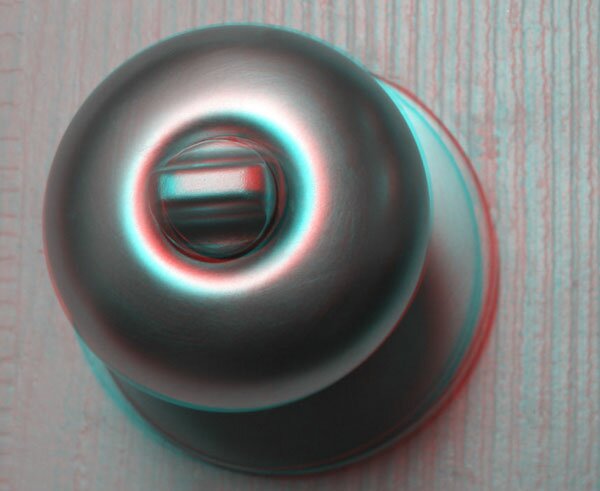What would happen if someone made 40 million pairs of 3D glasses, and then distributed them, for free, all over the United States? We'll start finding out today. Say what you will about Hannah Montana, but when someone writes the history of 3-D art and entertainment in 21st Century America, the date July 26, 2008, will have to be noted as the start of a new era.
Bradley Meehan is an entertainer in Kansas City. Yesterday, the day after the Hannah Montana concert was televised, he published his very first set of 3-D photographs, a series of nine compositions of household objects. He learned how to do it, and he did it, and he published it. They're not bad.
I believe he is part of a larger story. This week in America, we are seeing what I will call the "Hannah Montana Doorknob Effect." Millions of Americans -- I mean, tens of millions of Americans -- who did not own 3-D glasses last week, suddenly have them this week. And they want to use them. They want to see more 3D pictures, videos, and games. Some of them even want to create them. They have opened a door into a new medium, and Hannah Montana was their doorknob.












Sean,
Thanks for the link and review.
It was amazing, even after my first attempt, how easy it was to create these images. After reading the tutorial, my kids and I ran around the house looking for anything that looked like it would pop-out or had some depth to it. It will take some tweaking to get it right but now I’m hooked. Even only after two days, it’s hard to look at 2D images. [Snore]
I used a regular-ol’ Canon 2MP camera on a tripod. I put the tripod on a piece of cardboard and slid the tripod to the right to take the second shot. I was only guessing at the distance to slide it. I’m sure there’s a formula or general rule to it which i’d love to learn.
Sites like Swell3D are a great resource for new 3D fans. Keep up the good work.
Brad Meehan www.shakyvoice.com
You’re welcome, Bradley. The “general rule” is to move the camera the distance of the pupils of your eyes, or about two-and-a-half inches. That will give you the most natural results. After you nail that, you may experiment with departures from the rule — very generally speaking, the shots may be farther apart for very large subjects such as canyons, and closer together for very small close subjects such as doorknobs. (Use a macro lens to get even closer to objects like coins and buttons; and keep your shots just a fraction of an inch part.)